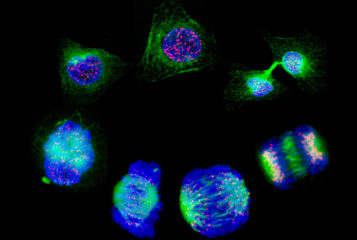An approach which significantly improves the ability to modify mitochondrial DNA in living cells has been developed by scientists in South Korea.
Researchers from the Centre for Genome Engineering at the Institute for Basic Science in Daejeon, South Korea have developed a method called TALED that is able to make targeted adenine (A)-to-guanine (G) base conversions in human mitochondrial DNA. It adds to the existing cytosine (C)-to-thymine (T) mitochondrial base editors in the currently limited mitochondrial genome editing toolbox (see BioNews 1055).
'Our new base editor dramatically expanded the scope of mitochondrial genome editing' said Dr Sung-Ik Cho, first author of the new study, which is published in Cell. 'This can make a big contribution, not only to making a disease model but also to developing a treatment.'
Mitochondria are found in almost every cell in the human body and provide the energy to fuel biological processes. Each mitochondrion contains its own DNA which carries genes essential for energy metabolism.
Mutations in mitochondrial DNA are known to cause several serious diseases collectively affecting around one in 5000 people. Point mutations account for 90 out of the 95 known disease-causing mutations.
Huge progress has been made editing genomic DNA, but mitochondrial DNA has remained an elusive target. This is largely because approaches like CRISPR/Cas9 target the DNA using RNA guide molecules that are unable to enter mitochondria.
The TALED method instead uses custom-designed proteins called TALEs (transcription activator-like effectors) to target specific regions in the DNA. The TALE protein is linked to two other proteins: a modified bacterial protein, TadA8e, that converts A-to-G, and a cytidine deaminase (DddA) that unwinds DNA, making it accessible to TadA8e. The TALED complex can be custom designed to enter mitochondria and make specific A-to-G conversions.
The authors applied this system in human cells to make A-to-G substitutions at 17 sites in mitochondrial DNA, with editing frequencies of up to 49 percent. There were no cytotoxicity effects reported or off-target edits of nuclear DNA, with very few off-target effects in mitochondrial DNA.
'Since adenine base editing can, in principle, correct many of the mutations in mitochondrial DNA that cause genetic diseases, [this] group's work is a key advance towards the precise correction of pathogenic mitochondrial mutations' Professor David Liu from the Broad Institute of Harvard and MIT, who was not involved in the current study said.
The researchers intend to improve the efficiency and specificity of TALED before any clinical applications. In the short term, TALED can be used to create much-needed animal models of mitochondrial genetic diseases to develop and test new therapeutics.
Sources and References
-
Targeted A-to-G base editing in human mitochondrial DNA with programmable deaminases
-
A new era of mitochondrial genome editing has begun
-
Human mitochondrial genome editing toolkit expands
-
This new genome editing tool targets the powerhouse of the cell
-
Scientists make a breakthrough in mitochondrial genome editing





Leave a Reply
You must be logged in to post a comment.